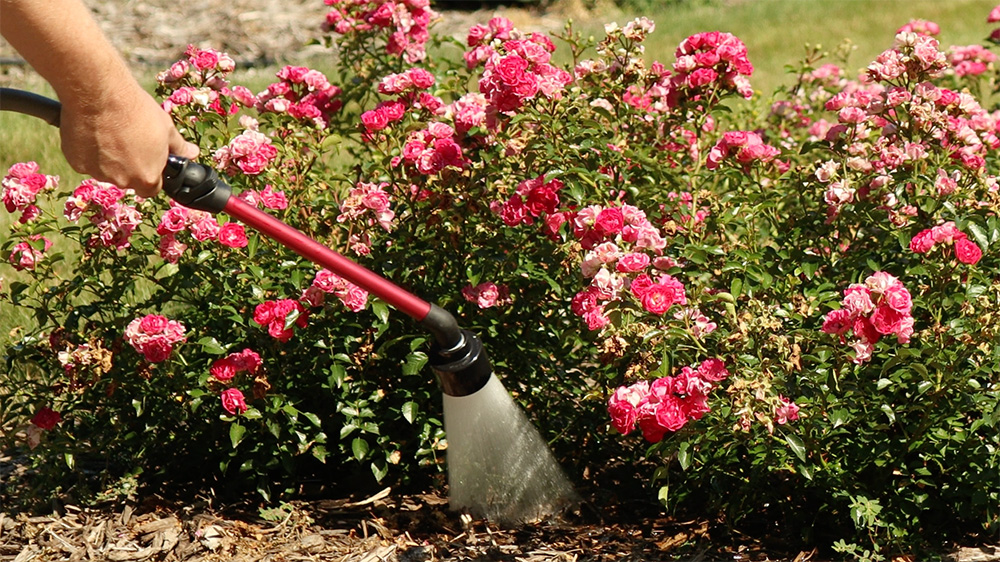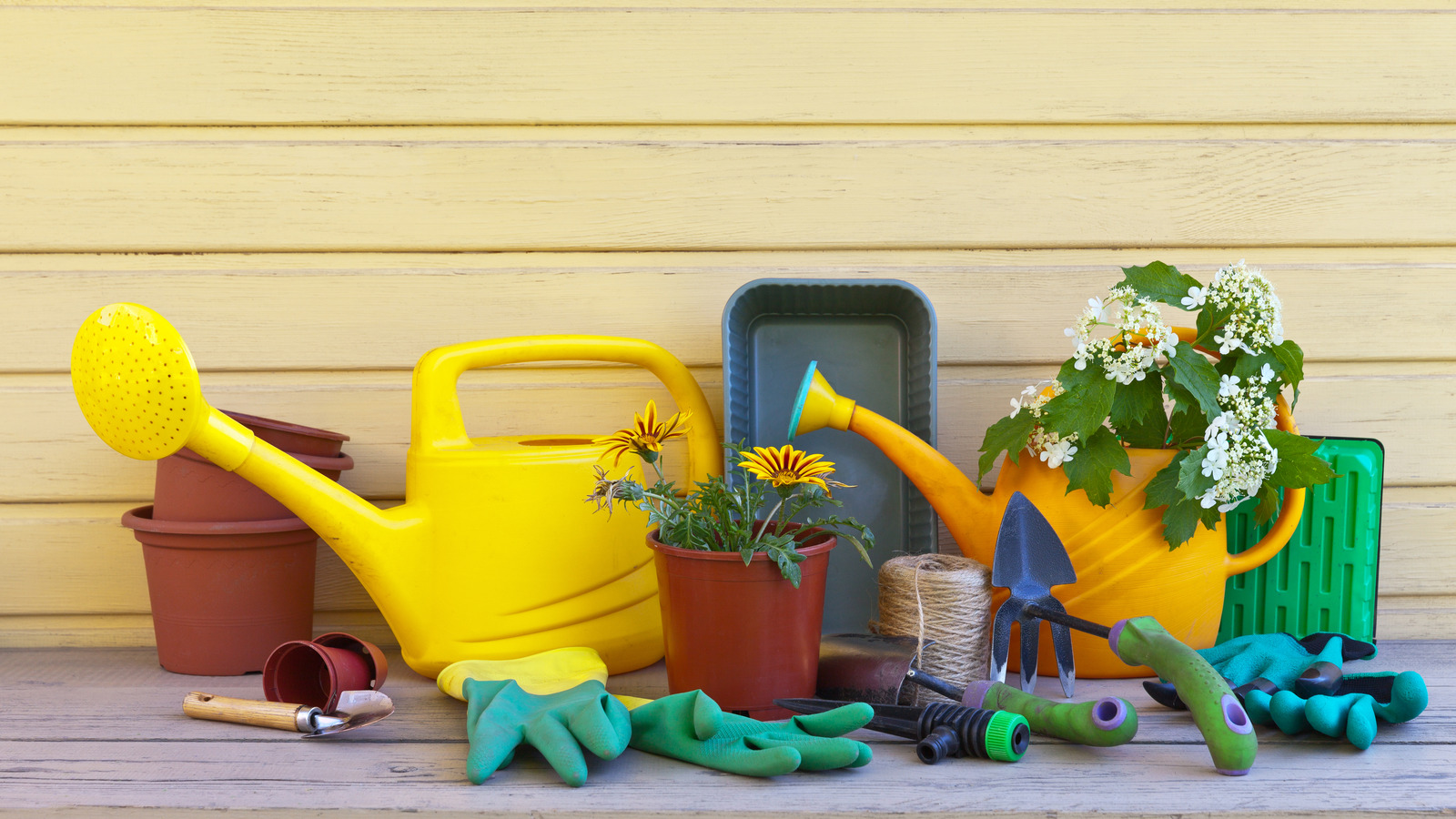How Often To Water Your Roses? 2024 Complete Guide
Watering roses correctly is key to their health and beauty. This guide will help you master the art of rose watering, ensuring healthy growth and vibrant blooms.
Sep 20, 202415K Shares444K Views

Watering roses is a task that might seem simple, but mastering the right techniques can make all the difference between a healthy, thriving garden and struggling, wilting blooms.
Roses need the perfect balance of water to grow strong, produce vibrant flowers, and resist diseases. Too much water can lead to root rot, while too little will leave your plants parched and weak.
This guide offers everything you need to know to ensure your roses get just the right amount of hydration.
By understanding the best times to water, the proper tools to use, and how to adjust for different seasons, you'll give your roses the best chance to flourish year after year.
Use The Correct Tools For Watering Roses
Using the right tools for watering not only makes the task easier but also helps ensure that the water is effectively delivered to your roses.
- Garden Hose with Rose Attachment or Watering Wand: A garden hose equipped with a rose attachment or watering wand provides a steady, gentle stream of water, ideal for watering deeply without damaging the soil or flowers.
- Watering Can for Precision: For gardeners who prefer more control over the amount of water, using a watering can is a good option, especially for container roses. It allows for slow, deliberate watering to ensure every plant gets what it needs.
- Drip Irrigation Systems: For those growing roses on a large scale, a drip irrigation systemensures consistent, deep watering, which helps the roots absorb moisture more effectively and reduces water waste.
- Softer Spray Settings: Avoid high-pressure sprays, as they can damage the plant's leaves and flowers. A softer spray or a gentle stream of water from a watering can or hose is the best approach.
By using the right tools, you can water your roses effectively without causing harm to the plant or wasting water.
Best Time To Water Roses: Morning Or Evening
The best time to water roses is early in the morning, ideally between 6 AM and 10 AM. Watering in the morning allows moisture to reach the roots before the sun’s heat evaporates it.
It also gives the leaves time to dry, which helps prevent common rose diseases like powdery mildew and black spot.
If you can't water in the morning, evening is the next best option. Just make sure to avoid wetting the foliage, as moisture left on the leaves overnight can encourage fungal growth.
The key is to water when it's cooler, allowing your roses to absorb the water without losing it to evaporation.
How Much Water Should You Give Roses?
Knowing how much water roses need is crucial for their health. Different types of roseshave different watering requirements. Here’s a general guide on how much water to give each variety:
- Shrub Roses: 5 liters per watering
- Climbing Roses: 10 liters per watering
- Rambling Roses: 10 liters per watering
- Standard Tree Roses: 10 liters per watering
- Roses in Pots: 5 liters per watering
For newly planted roses, water them every 3-4 days to help their roots establish. Established roses can be watered once a week, though you should increase the frequency during hot or dry periods. The key is to provide enough water to soak the soil deeply, encouraging strong root growth.
Check The Soil Before Watering
Before watering, always check the soil to avoid overwatering or underwatering. Here’s how you can check:
The Finger Test: Insert your finger about 1-2 inches into the soil. If the soil is dry at this depth, it’s time to water. If it feels moist, wait before watering again.
Checking the soil ensures that you provide the right amount of water based on the plant’s needs rather than sticking to a rigid schedule. This practice prevents issues like root rot from overwatering or dehydration from underwatering.
Water Rose Bushes At The Base
To ensure your roses absorb water effectively, focus on watering at the base of the plant. Here’s why:
- Avoid Wetting the Foliage: Watering over the top of the plant may seem convenient, but it can encourage fungal diseases if the foliage gets wet and stays damp overnight. Always direct the water to the base of the plant to ensure the roots absorb the water and the leaves remain dry.
- Deep Watering: Deep, slow watering encourages strong root growth. Watering too quickly or too little can result in shallow roots that struggle to support the plant during dry or hot weather.
By watering directly at the base, you help protect your roses from disease and ensure that the roots receive the moisture they need.
Watering Frequency Based On Rose Type And Season
Watering needs vary by season and rose type. Here’s a breakdown of how often to water roses based on the time of year:
- Spring (March to May): Water newly planted roses every 2-3 days, especially during dry periods. Established roses can be watered once a week.
- Summer (June to September): Water newly planted roses every other day and established roses once a week. In extremely hot weather, check for wilting and water more frequently if needed.
- Fall (October to November): Water roses lightly once a week as they prepare for dormancy.
- Winter (December to February): Roses generally do not need watering in winter, as they rely on rainfall during dormancy. However, if you live in a dry area, water lightly once a week.
By adjusting your watering schedule according to the season, you’ll ensure your roses get the hydration they need year-round.
Soil Considerations For Watering Roses
Soil type plays a crucial role in determining how often and how much to water your roses. Here are the key factors to keep in mind:
- Loamy Soil: Ideal for roses, loamy soil retains water well while also allowing for proper drainage. It provides the right balance of moisture retention and air circulation around the roots. Adding organic matter like compost, peat moss, or composted manure can improve soil quality.
- Clay Soil: Clay tends to retain water longer, so you may need to water less frequently. However, you’ll need to ensure proper drainage to prevent water from pooling around the roots and causing rot.
- Sandy Soil: Sandy soil drains quickly and dries out faster, meaning you’ll need to water more often to keep your roses hydrated. Adding organic matter can help the soil retain moisture longer.
Creating the right soil conditions by incorporating organic materials not only improves water retention but also provides essential nutrients to your roses.
Watering Roses In Containers
Watering roses in containers requires more attention because the soil dries out faster than in garden beds. If you’re growing roses in pots, here’s what you need to know:
- Choose a Large Container: A larger pot helps retain moisture longer and gives the root system room to expand. Smaller containers tend to dry out more quickly.
- Check the Soil Daily: Especially during warm weather, check the soil moisture every day. If the top inch feels dry, it’s time to water.
- Ensure Proper Drainage: Make sure your container has drainage holes to prevent water from pooling at the bottom, which can lead to root rot.
Place potted roses in a spot where they get sunlight, but avoid areas where the heat is too intense, as this can dry out the soil quickly.
How Proper Watering Protects Roses During Extreme Weather
In regions prone to extreme weather, such as high winds or scorching heat, proper watering becomes even more important. Here’s how watering can help protect your roses:
- Strong Root System: Watering deeply and regularly helps your roses develop a strong root system that can support them through challenging weather conditions. Established plants with strong roots are better equipped to withstand wind, drought, and heat.
- Mulching for Protection: Mulching around the base of your roses helps conserve moisture, keeps the soil temperature regulated, and provides extra protection during extreme heat. It also reduces water evaporation, ensuring your roses stay hydrated for longer.
By establishing a strong watering routine and adding mulch, you give your roses the best chance of thriving even in adverse weather.
Signs Of Overwatering In Roses
Overwatering can cause just as many problems for roses as underwatering. Here are the most common signs of overwatering and how to fix them:
- Yellowing Leaves: If your rose leaves are turning yellow and wilting, you may be overwatering. Check if the soil is soggy or waterlogged, and reduce watering frequency.
- Mushy Roots: Overwatered roses often develop root rot, which weakens the plant and makes it more susceptible to disease. To fix this, ensure proper drainage and reduce watering.
- Drooping Foliage: While wilting can be a sign of underwatering, drooping due to overwatering typically happens in moist, waterlogged soil. Check the soil before watering again.
Always check the soil moisture to ensure you’re not overwatering, and use well-drained soilto prevent water from pooling around the roots.
Feeding Roses While Watering
Roses need regular feeding to support their growth and blooming. Here’s how you can combine feeding with your watering routine:
- Organic Water-Soluble Fertilizers: Many gardeners prefer to feed their roses with organic water-soluble fertilizers while they water. This provides a steady supply of nutrients that support strong growth and vibrant blooms.
- Seasonal Fertilization: For home gardeners, a practical schedule is to feed roses four times a year: around Easter, Memorial Day, 4th of July, and Labor Day. This helps ensure your roses receive the nutrients they need during their peak growing seasons.
Feeding roses regularly during watering helps ensure they have the energy and nutrients to produce healthy foliage and abundant blooms.
Frequently Asked Questions (FAQs)
How Often Should I Water My Roses During A Heatwave?
During extreme heat, water your roses every other day, or even daily for container roses. Always check the soil moisture to avoid underwatering or overwatering.
How Much Water Do Climbing Roses Need?
Climbing roses typically require about 10 liters of water per session. Adjust the amount based on weather conditions and soil type.
Should I Water Roses In The Winter?
Roses generally don’t need watering during winter dormancy, especially if your area gets regular rainfall. If it's a dry winter, water once a week to prevent the soil from drying out.
Can I Use A Pressure Hose For Watering Roses?
Avoid using high-pressure hoses, as they can damage the plant and soil. Instead, use a hose with a rose attachment or a gentle spray setting to water effectively.
Conclusion
Proper watering is the foundation for a successful rose garden. With the right techniques, you can nurture strong roots, healthy foliage, and beautiful blooms that thrive through every season.
Paying attention to soil moisture, adjusting for seasonal changes, and using the best watering practices will ensure your roses remain vibrant and full of life.
Apply these proven tips and enjoy a garden that rewards your efforts with abundant flowers and healthy growth. With just a little extra care, your roses will become a stunning focal point that brings joy and beauty to your outdoor space.
Jump to
Use The Correct Tools For Watering Roses
Best Time To Water Roses: Morning Or Evening
How Much Water Should You Give Roses?
Check The Soil Before Watering
Water Rose Bushes At The Base
Watering Frequency Based On Rose Type And Season
Soil Considerations For Watering Roses
Watering Roses In Containers
How Proper Watering Protects Roses During Extreme Weather
Signs Of Overwatering In Roses
Feeding Roses While Watering
Frequently Asked Questions (FAQs)
Conclusion
Latest Articles
Popular Articles


